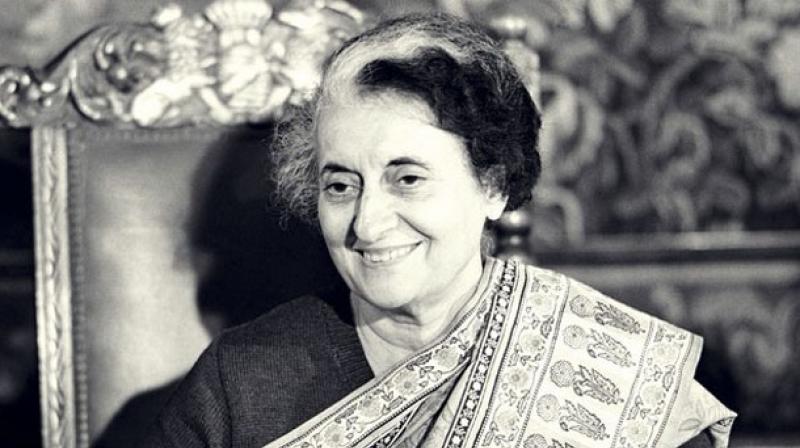Indira's mixed legacy: '71 triumph, '75 nadir

The way to contemplate political figures like Indira Gandhi with clarity is by continuously re-evaluating them, undeterred by habitual loyalists who scream “Please don’t libel the dead!” My hero worship of Mrs Gandhi goes back to my boyhood days. It required several phases of revision when I join-ed The Statesman and my seniors taught me not to be overawed. “Faults she had some”, they insisted. But I remembered Alexander Pope’s next line: “For who from faults is free?” But soon enough, I did begin to see the warts.
In fact, I saw Feroze Gandhi from close before I did Mrs Gandhi. The normal sequence was reversed because Feroze had woven his parliamentary constitu-ency around my uncle Saiyid Wasi Naqvi’s Rae Bareli Assembly seat. Uncle’s house was the election headquarters. After Prime Minister Lal Bahadur Shastri’s sudden death in Tashk-ent in 1966, Mrs Gandhi defeated the candidate of the party’s conservative wing, Morarji Desai, and became Prime Minister. The first general election she led the party into in 1967 was a jolt — the Congress lost in eight states. Its numbers dwindled even in Parliament, giving edge to Ram Manohar Lohia’s barbs against her. Goo-ngi gudia (dumb doll) was what the Socialist leader repeatedly called her in the House.
The fact that she was the daughter of Jawaha-rlal Nehru was a factor in her ascent as Congr-ess president in 1957. This certainly did generate dissension against her from the party’s conservative right wing. Was it to placate this faction that she engineered the dismissal of the world’s first Communist government which had come to power in Kerala through the ballot box? Her implication in the Kerala drama was circumstantial. More pertinently, was it not an early manifestation of Nehru yielding to the right wing in his Cabinet?
Ellsworth Bunker, US ambassador to India at the time, admitted much later that senior Mumbai Congress man S.K. Patil had been the go-between with the CIA, which helped stoke anti-government agitations in the state. Daniel Patrick Moynihan, who served as US ambassador to India in the 1970s, and later to the UN, mentioned the Kerala episode in his book A Dangerous Place. Mrs Gandhi was more herself when this rightward ideological shift was balanced during the 1969 Congress split, when she nationalised the banks and discontinued the privy purses of India’s princes. The London Times’ correspondent, Peter Hazle-hurst, sarcastically described her as “left of self-interest”. She probably was. When a US nuclear device for surveillance on China was found on Nanda Devi, the Congress Party was in convulsions.
During an interview with me, former US ambassador Chester Bowles (convalescing with severe Parkinson’s in Florida) expressed surprise over the furore on the nuclear device. “Indira knows it was a joint expedition,” he said. After she split the Congress, Left intellectuals like P.N. Haksar, her principal secretary, and Cabinet minister Mohan Kumaraman-galam were her key advisers. Indeed the Kumaramanglam thesis, famous those days, justified cohabitation with the Communist Party of India. In fact, CPI general secretary Sripad Dange elaborated that his party would support the Congress’ pro-people policies and struggle against its anti-people tendencies.
This leftward shift reached its high point when, with Soviet help, Mrs Gandhi decided to intervene in the creation of Bangladesh. Her popularity was at its peak. Even Atal Behari Vajpayee was inspired to address her as Durga. This cozy dalliance with Communists, however, caused a tumult in the global political cosmos, particularly when détente was going badly for the West. The “dangerous shift” was one of the reasons why the Soc-ialists, pro-US Congress conservatives and the Jan Sangh (today’s BJP) came together under the umb-rella of arch-Gandhian, former Socialist leader Jayaprakash Narayan in what was known as the JP (or Bihar) movement, launched against Mrs Gandhi’s indefinable corruption.
She was clearly nervous at the momentum which the JP movement was gathering. When the Allahabad high court unseated her over minor electoral misdemean-ours, she was rattled. It was her younger son Sanjay who really had the Emergency imposed on June 25, 1975. He also immobilised key officials around Mrs Gandhi like P.N. Haksar and media adviser H.Y. Sharada Prasad. Mohammad Yunus was so close to Mrs Gandhi and Sanjay that he was able to appoint himself special envoy. This blanket job definition also enabled him to dabble with the media. He mobilised me for a job which enabled me to see a side of Mrs Gandhi that I doubt anyone else has ever seen.
I was ushered into her presence for an interview for the Sunday Times of London. I was the paper’s stringer in India. This was to be a world scoop — the first interview with Mrs Gandhi after she declared the Emergency. Mrs Gandhi looked petrified — white as a sheet. She answered none of my questions. She kept gazing at the wall, without any change of expression and doodling on a paper she never glanced at. What appeared in the Sunday Times was what Yunus (with my editorial help) cooked up on behalf of Mrs Gandhi. But this is not the only defining image of Mrs Gandhi. There are others, such as during Bangladesh war, which justify her reputation as the “Iron Lady”. But neither this nor her secular image remained unsullied, particularly when she used the communal card during the 1983 elections from Jammu. The communal tone given to the Congress campaign in Jammu became the norm even after Mrs Gandhi’s assassination in 1984.
The unprecedented 404 seats in a Lok Sabha of 514 that Rajiv Gandhi bagged were due to a sympathy wave. That is what some of us thought. But according to the party’s senior leaders, it was Hindu consolidation against minority Sikh communalism. The community in question this time may have been Sikhs, but Hindu consolidation was internalised by the party as a “formula” which became operational against all minorities, above all Muslims.

